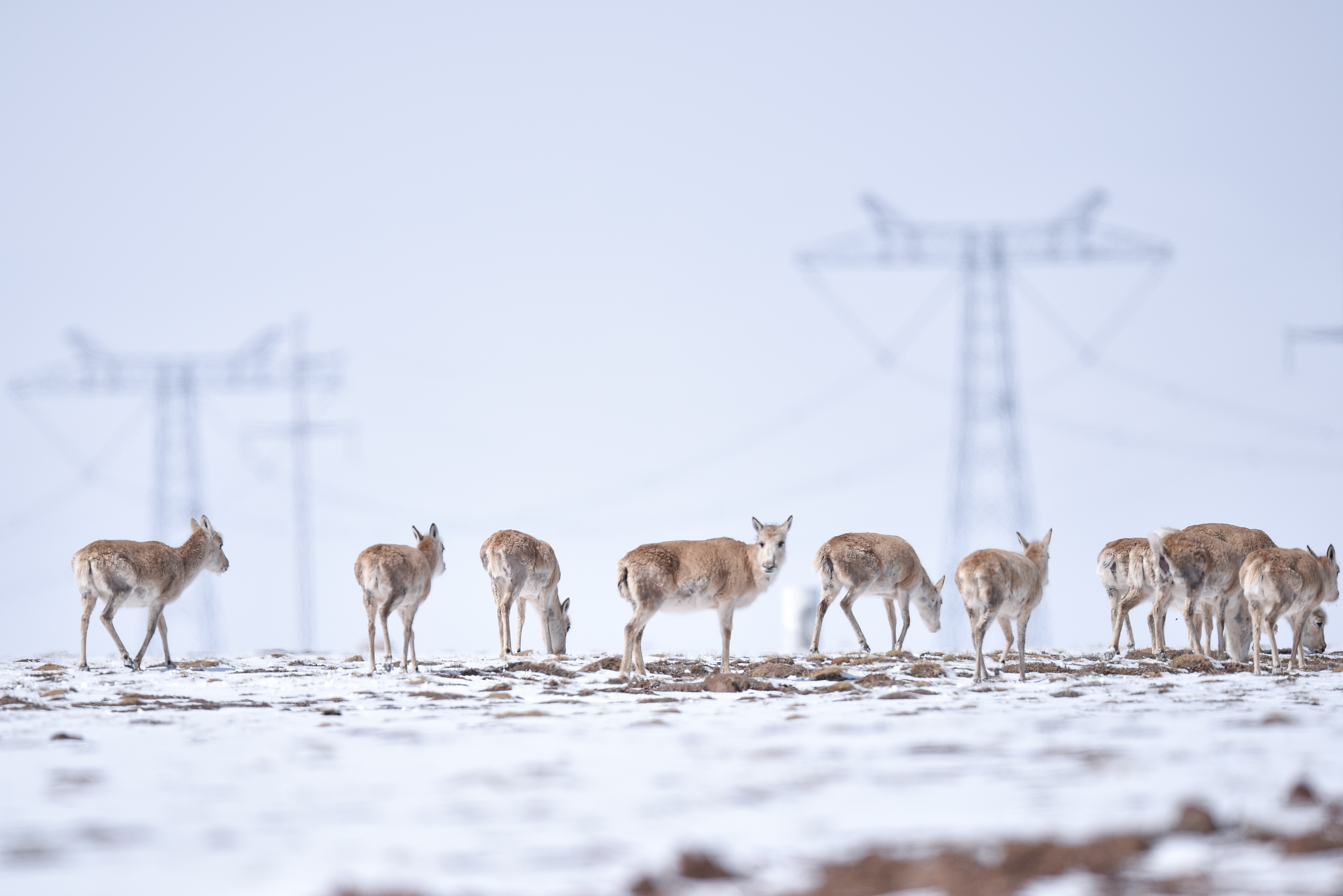Protection has antelope numbers leaping ahead


The antelope are a first-class protected species in China, but they are making good progress in increasing their numbers. The population of the species has grown from 60,000 or 70,000 in the early 1990s to around 300,000 now.
"Every year, starting from around May, all the female antelopes, including 2-year-olds, take part in the migration," said Wu, who also works for the Northwest Institute of Endangered Zoological Species.
Wu said the habitat for the Tibetan antelope in China covers more than 1 million square kilometers, mostly in remote, severe environments with altitudes between 3,700 meters and 5,500 meters.
"Because of climate change, the migration time of the antelopes during which they give birth is coming a few days earlier, and their longest migratory route could reach 800 km if measured in a straight line," Wu said.
More than 90 percent of the female animals give birth every year, but only about 30 percent of the newborns survive. Many of the calves die on the journey, unable to hold up under the extreme conditions, which include predators and disease.
Wu said there are more than 200,000 of the antelopes in Tibet's northern Changthang grassland, more than 70,000 in the Hoh Xil areas and more than 20,000 in Xinjiang.
From a survey trip he took to observe the migration in July last year, he happened to observe a herd of more than 60,000 migrating antelopes at close range in Rongma township in Tibet's Nyima county.
"I was shocked to see such a big herd," he said. "I felt what turned out to be a magnitude 6.6 earthquake early in the morning, but I had a pleasant time for the rest of that day."
Thanks to the government's protection efforts, patrol stations are abundant. However, there is a slight problem of conflict between nomads and wildlife in Tibet, he said.
"The nomads put fences on the grassland to protect the grass and distinguish their own share of grassland, but sometimes these hinder the normal activity of the Tibetan antelopes," he said, adding that passageways must be cut through the fences to let the animals through.
"The government of the Tibet autonomous region has taken action in recent years to give more protected space to wildlife by relocating nomads from places at altitudes above 4,800 meters to other places in the region," he said.
"Relocation of nomadic families from extremely high altitudes is a smart measure, and we also need to have more high-tech facilities to carry out surveys and protection work in the reserves."
According to a staff member at the Nagchu bureau of forestry and grassland, the city has been working to provide a better habitat for many rare wildlife species, including the Tibetan antelope. The city's ecological protection measures include operating 73 management stations. In addition, it employs 780 professional patrol officers who have worked year-round for the safety of wildlife since 2015.
Around the habitat of the Tibetan antelope in the Serling Tso National Park in Shanza and Palgon counties, 64 full-time staff members guard the passageways, resting areas and birthing places.























